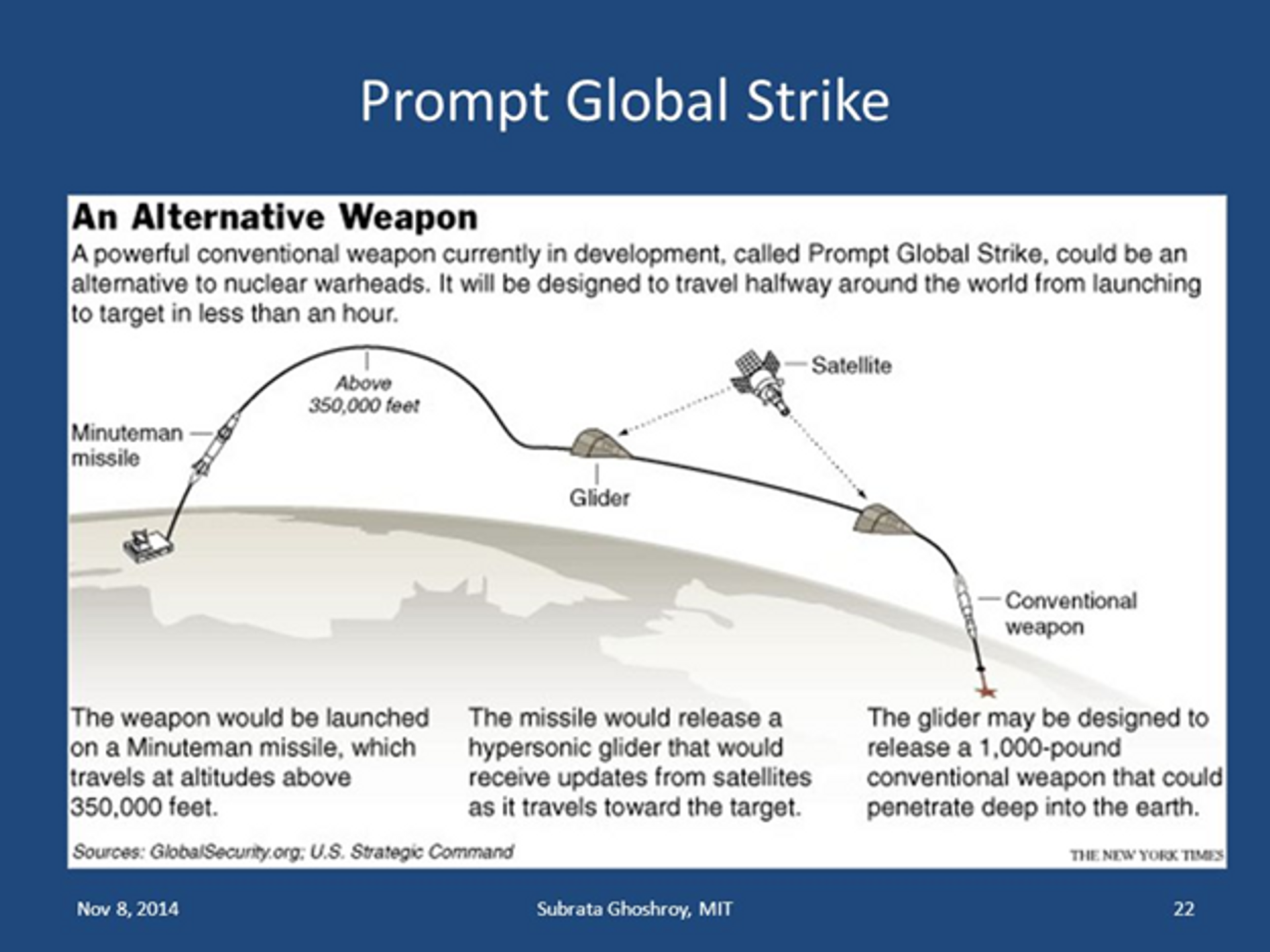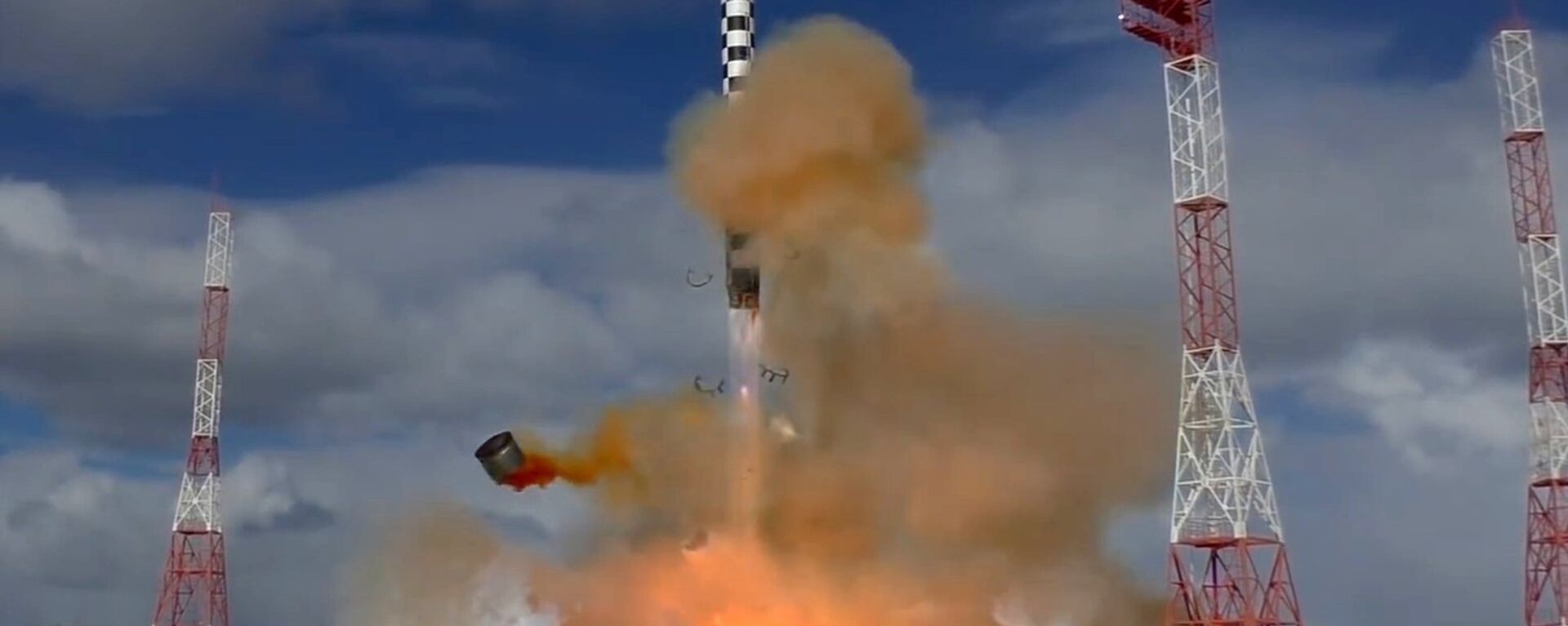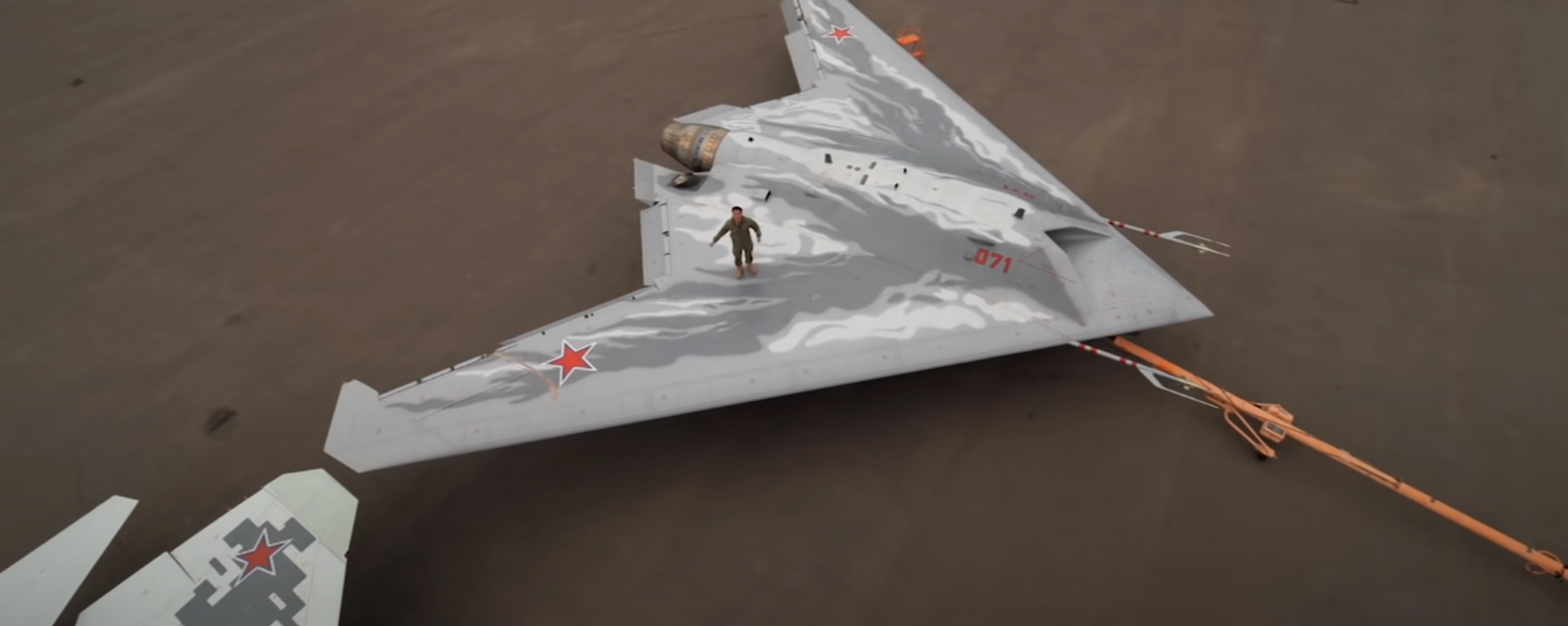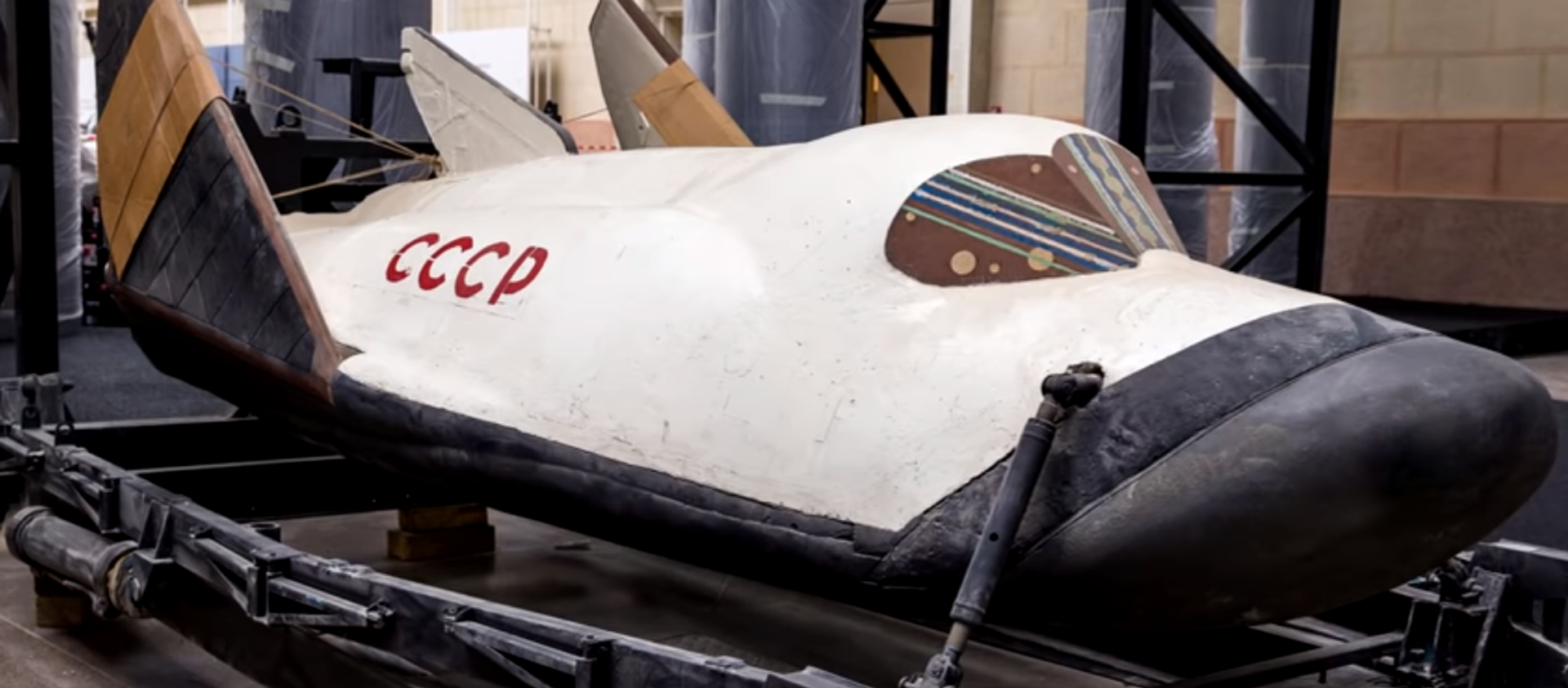https://sputnikglobe.com/20231216/putin-hails-new-weapons-which-will-make-russia-feel-safe-what-did-he-mean-1115629734.html
Putin Hails New Weapons Which Will Make 'Russia Feel Safe': What Did He Mean?
Putin Hails New Weapons Which Will Make 'Russia Feel Safe': What Did He Mean?
Sputnik International
President Putin traveled to Severodvinsk this week to oversee the commissioning of new vessels at Russia's largest shipyard. During the tour, he left a note in the Admiral Kasatonov frigate’s logbook reading “With such sailors, ships and weapons, Russia will feel safe.” What arms was Putin talking about? Sputnik asked a leading military expert.
2023-12-16T17:39+0000
2023-12-16T17:39+0000
2023-12-16T17:46+0000
military
vladimir putin
military & intelligence
nikolai evmenov
russia
ukraine
nato
pentagon
severodvinsk
bulava
https://cdn1.img.sputnikglobe.com/img/07e7/0c/10/1115629172_0:320:3072:2048_1920x0_80_0_0_a60a0b92201250ae2ccc77eb2a416692.jpg
The Admiral Kasatonov joined Russia’s Northern Fleet in July 2020, becoming the second Project 22350 series frigate to be commissioned.During his visit to Severodvinsk on Monday, Putin inspected the warship’s advanced, digitized navigation station, which relays information collected by a series of sensors on conditions and potential threats on the surface, underwater and in the air. Sailors told the president that the ship’s modern systems make it easy to control, with its navigation station “facilitat[ing] decision-making for the ship’s captain and helps him navigate faster.”Russian Navy Commander-in-Chief Nikolai Evmenov accompanied Putin during his tour of Severodvinsk, showing him the silos where the Zircons are launched from.Along with his visit aboard the Admiral Kasatonov, Putin took part in a flag-raising ceremony for the Emperor Alexander III and the Krasnoyarsk. The former is a Borei-A nuclear-powered ballistic missile-armed submarine that can carry up to 16 of Russia’s new Bulava submarine-launched ballistic missiles. The latter is a Yasen-M class nuclear-powered cruise missile submarine that can carry the aforementioned Oniks anti-ship and Kalibr anti-ship, anti-submarine and land attack cruise missiles.The Zircons carried by the Admiral Kasatonov are just one of a series of unique Russian missile systems with no analogues in the world which Russia developed in recent years, and which help keep the country safe against full-scale enemy aggression, says military historian, commentator and missile and air defense specialist Yuri Knutov.Others include the Kinzhal hypersonic air-launched missile, “with whose help the headquarters of the Ukrainian military and NATO countries on Ukraine’s territory were destroyed twice,” Knutov told Sputnik. “In addition, a Patriot missile system was disabled with the help of Kinzhal missiles, part of it destroyed and part requiring major repairs.”Along with the Zircon, Knutov mentioned the Avangard hypersonic glider platform, which can be mounted as a MIRV payload and deployed by Bulava, Yars, Topol M or new Sarmat ultra-long range ballistic missiles, and can accelerate to unparalleled speeds of up to Mach 27 (over 33,300 km/hour) and maneuver in flight, as a significant new development.“We also have the deep-sea, nuclear-powered underwater drone known as the Poseidon, which has terrified many military experts, particularly in the UK and US. This device is capable of traveling several thousand kilometers, and in the final stage of its trip moves at very high speeds – a capability which has mystified many design engineers, since there is a fairly high level of resistance under water. In addition, the device is capable of carrying a powerful nuclear charge which can not only destroy an enemy carrier group, but cause a tsunami wave that can wash away port facilities and even entire cities,” the observer noted.Then there’s the Burevestnik – the nuclear-powered cruise missile which Russia successfully tested in October.The Sarmat ICBM is another potent threat, with its short boost phase not only making it difficult to track by satellites and infrared sensors, but hard to intercept by the US’s Aegis interceptor missiles.Amid decades of encroachment by NATO, threats to deploy offensive missile weapons near Russia’s borders, and efforts by the US to create missile defenses to render Russia’s strategic response useless, the new strategic armaments developed by Russian military engineers in recent years are designed to provide the country with the ability to face down threats of the gravest kind.Most importantly, they are meant to force military planners in the Pentagon to reconsider mad plots such as ‘Prompt Global Strike’ – a vision involving the decapitation of Russia’s civilian and military leadership and the neutralization of its nuclear potential using conventional cruise missiles launched en masse.Conventional CapabilitiesIn conventional arms, too, the NATO-fueled proxy war in Ukraine has demonstrated the unique capabilities of some Russian weapons, and the weaknesses of their Western bloc counterparts. Whether talking about the Light Multipurpose Guided Rocket air-launched anti-armor missile, or the frightening TOS-1A thermobaric flamethrower system, some Russian weapons systems simply have no analogues. Others, like the T-90 and even modernized T-72 tanks, have proven more than a match for the Western heavy armor which NATO long presumed would be able to easily chew through Soviet and Russian tanks.In the air, Knutov noted, the Sukhoi Su-57 fifth-gen jet and S-70 Okhotnik heavy stealth drone combo may be shaping up into a weapons platform with no analogues anywhere in the world.Secret to Russia’s SuccessAsked why NATO countries have been unable to match Russia’s military ingenuity, particularly in missile weaponry, despite military R&D budgets dozens if not hundreds of times higher, Knutov said it comes down to Russia’s reliance on the seemingly inexhaustible “Soviet school” of engineering thought.“This was also associated with the development of the space industry and rocket science. Considering our country’s vast size, we needed to develop air and missile defenses which required knowledge of certain characteristics and know-how. That’s why this Soviet school, which has been preserved in our country and is developing, has allowed us to get ahead when it comes to hypersonic arms,” the expert said.Predictions for the FutureThe development of hypersonic weapons is no easy task, requiring the perfection of missiles’ protective outer layer to be able to operate while covered in plasma. “How we managed to solve this problem is a mystery for many countries. Taking advantage of the fact that we’ve solved this problem, we’re moving forward. And I hope that the hypersonic missiles we have discussed won’t be the last, and that in the future the field of hypersonic missiles will continue to develop quickly and effectively,” Knutov said.In addition, the observer stressed that attention must be paid to the field of weapons based on new physical principles, including laser weapons.Finally, there are electromagnetic weapons, which Knutov expects in the near future to include powerful electromagnetic guns that can burn out electronic circuit boards of enemy cruise missiles, drones, conventional aircraft, helicopters, and so on, as well as plasma weapons similar to ball lightning.
https://sputnikglobe.com/20231020/how-fast-is-russias-avangard-missile-1114346196.html
https://sputnikglobe.com/20230622/what-is-the-sarmat-missile-and-why-does-western-media-call-it-the-satan-ii-1111399194.html
https://sputnikglobe.com/20230424/russia-brings-focus-on-development-of-military-drones-electronic-warfare-1109782683.html
https://sputnikglobe.com/20190324/dream-chaser-soviet-design-similarities-1073505033.html
https://sputnikglobe.com/20230927/how-laser-weapons-work-1113652558.html
russia
ukraine
Sputnik International
feedback@sputniknews.com
+74956456601
MIA „Rossiya Segodnya“
2023
News
en_EN
Sputnik International
feedback@sputniknews.com
+74956456601
MIA „Rossiya Segodnya“
Sputnik International
feedback@sputniknews.com
+74956456601
MIA „Rossiya Segodnya“
what are russia's hypersonic missiles, what are russian missiles' capabilities, russian missile, why russian weapons so good, what russian weapons are the best, top russian weapons, are russian arms better than american, who buys most russian arms, does the us have more powerful weapons than russia, what is so special about russian weapons systems
what are russia's hypersonic missiles, what are russian missiles' capabilities, russian missile, why russian weapons so good, what russian weapons are the best, top russian weapons, are russian arms better than american, who buys most russian arms, does the us have more powerful weapons than russia, what is so special about russian weapons systems
Putin Hails New Weapons Which Will Make 'Russia Feel Safe': What Did He Mean?
17:39 GMT 16.12.2023 (Updated: 17:46 GMT 16.12.2023) President Putin traveled to Severodvinsk this week to oversee the commissioning of new vessels at Russia's largest shipyard. During the tour, he left a note in the Admiral Kasatonov frigate’s logbook reading “With such sailors, ships and weapons, Russia will feel safe.” What arms was Putin talking about? Sputnik asked a leading military expert.
The Admiral Kasatonov joined Russia’s Northern Fleet in July 2020, becoming the second Project 22350 series frigate to be commissioned.
During his visit to Severodvinsk on Monday, Putin inspected the warship’s advanced, digitized navigation station, which relays information collected by a series of sensors on conditions and potential threats on the surface, underwater and in the air. Sailors told the president that the ship’s modern systems make it easy to control, with its navigation station “facilitat[ing] decision-making for the ship’s captain and helps him navigate faster.”
Putin was informed that the Admiral Kasatonov can be armed with up to 16 vertically-launched missiles (including Kalibr, Oniks and Zircon anti-ship missiles and the brand new Otvet anti-submarine missiles). Russia plans to build ten of the hypersonic missile-carrying surface cruisers in total.
Russian Navy Commander-in-Chief Nikolai Evmenov accompanied Putin during his tour of Severodvinsk, showing him the silos where the Zircons are launched from.
Along with his visit aboard the Admiral Kasatonov, Putin took part in a flag-raising ceremony for the Emperor Alexander III and the Krasnoyarsk. The former is a Borei-A nuclear-powered ballistic missile-armed submarine that can carry up to 16 of Russia’s new Bulava submarine-launched ballistic missiles. The latter is a Yasen-M class nuclear-powered cruise missile submarine that can carry the aforementioned Oniks anti-ship and Kalibr anti-ship, anti-submarine and land attack cruise missiles.
The Zircons carried by the Admiral Kasatonov are just one of a series of unique Russian missile systems with no analogues in the world which Russia developed in recent years, and which help keep the country safe against full-scale enemy aggression, says military historian, commentator and missile and air defense specialist Yuri Knutov.
Others include the Kinzhal hypersonic air-launched missile, “with whose help the headquarters of the Ukrainian military and NATO countries on Ukraine’s territory were destroyed twice,” Knutov told Sputnik. “In addition, a Patriot missile system was disabled with the help of Kinzhal missiles, part of it destroyed and part requiring major repairs.”
Along with the Zircon, Knutov mentioned the Avangard hypersonic glider platform, which can be mounted as a MIRV payload and deployed by Bulava, Yars, Topol M or new Sarmat ultra-long range ballistic missiles, and can accelerate to unparalleled speeds of up to Mach 27 (over 33,300 km/hour) and maneuver in flight, as a significant new development.

20 October 2023, 15:09 GMT
“The Avangard is practically covered with plasma [during flight, ed.] and the plasma absorbs electromagnetic rays, thus making the hypersonic vehicle invisible to radar. As a result of high kinetic energy, the hypersonic Avangard can destroy targets without the use of nuclear weapons. This is a unique tool, and to date no other country in the world has created anything like it,” Knutov said.
“We also have the deep-sea, nuclear-powered underwater drone known as the Poseidon, which has terrified many military experts, particularly in the UK and US. This device is capable of traveling several thousand kilometers, and in the final stage of its trip moves at very high speeds – a capability which has mystified many design engineers, since there is a fairly high level of resistance under water. In addition, the device is capable of carrying a powerful nuclear charge which can not only destroy an enemy carrier group, but cause a tsunami wave that can wash away port facilities and even entire cities,” the observer noted.
Then there’s the Burevestnik – the nuclear-powered cruise missile which Russia successfully tested in October.
“This is another major achievement. No country in the world has created anything like this,” Knutov said. “This missile can bypass air and missile defense networks, can sneak up on a target from an unexpected area and attack it.”
The Sarmat ICBM is another potent threat, with its short boost phase not only making it difficult to track by satellites and infrared sensors, but hard to intercept by the US’s Aegis interceptor missiles.
Of course, nearly all of the above armaments constitute so-called doomsday weapons – to be used only as a means of last resort in the event of enemy aggression.
Amid decades of encroachment by NATO, threats to deploy offensive missile weapons near Russia’s borders, and efforts by the US to create missile defenses to render Russia’s strategic response useless, the new strategic armaments developed by Russian military engineers in recent years are designed to provide the country with the ability to face down threats of the gravest kind.
Most importantly, they are meant to force military planners in the Pentagon to reconsider mad plots such as ‘Prompt Global Strike’ – a vision involving the decapitation of Russia’s civilian and military leadership and the neutralization of its nuclear potential using conventional cruise missiles launched en masse.
Conventional Capabilities
In conventional arms, too, the NATO-fueled proxy war in Ukraine has demonstrated the unique capabilities of some Russian weapons, and the weaknesses of their Western bloc counterparts. Whether talking about the Light Multipurpose Guided Rocket air-launched anti-armor
missile, or the frightening TOS-1A thermobaric
flamethrower system, some Russian weapons systems simply have no analogues. Others, like the T-90 and even modernized T-72 tanks, have
proven more than a match for the Western heavy armor which NATO long presumed would be able to easily chew through Soviet and Russian tanks.
In the air, Knutov noted, the Sukhoi Su-57 fifth-gen jet and S-70 Okhotnik heavy stealth drone combo may be shaping up into a weapons platform with no analogues anywhere in the world.
“The Su-57 has been operated in Ukraine, used against various targets, destroying air defenses, other significant targets, without being detected by Ukraine’s radar systems or the assets of NATO countries,” the observer said.
Secret to Russia’s Success
Asked why NATO countries have been unable to match Russia’s military ingenuity, particularly in missile weaponry, despite military R&D budgets dozens if not hundreds of times higher, Knutov said it comes down to Russia’s reliance on the seemingly inexhaustible “Soviet school” of engineering thought.
“In Soviet times, a great deal of attention was paid to the study of the strength of materials – the structural performance of materials, and developments in this direction, including the production of various rare metals with unique properties. Later, this extended to composite materials. That is, we have technologies dating back to Soviet times that are truly superior to Western ones, by a factor of many times over,” Knutov explained.
“This was also associated with the development of the space industry and rocket science. Considering our country’s vast size, we needed to develop air and missile defenses which required knowledge of certain characteristics and know-how. That’s why this Soviet school, which has been preserved in our country and is developing, has allowed us to get ahead when it comes to hypersonic arms,” the expert said.
Predictions for the Future
The development of hypersonic weapons is no easy task, requiring the perfection of missiles’ protective outer layer to be able to operate while covered in plasma. “How we managed to solve this problem is a mystery for many countries. Taking advantage of the fact that we’ve solved this problem, we’re moving forward. And I hope that the hypersonic missiles we have discussed won’t be the last, and that in the future the field of hypersonic missiles will continue to develop quickly and effectively,” Knutov said.
In addition, the observer stressed that attention must be paid to the field of weapons based on new physical principles, including laser weapons.
“Here, the main issue is to solve the problem of creating a laser with the power of one megawatt. When this happens, laser weapons will become the norm, since they are effective, and inexpensive in terms of the cost of a single pulse. They can be used in air defense, missile defense, even the organization of anti-tank defenses and for other tasks,” the observer said.
Finally, there are electromagnetic weapons, which Knutov expects in the near future to include powerful electromagnetic guns that can burn out electronic circuit boards of enemy cruise missiles, drones, conventional aircraft, helicopters, and so on, as well as plasma weapons similar to ball lightning.
“These are directions engineers in countries around the world are working on today, including the United States and Russia. This is a new direction which in 15-20 years will become the key for equipping the armed forces of all leading countries in the world,” the observer summed up.

27 September 2023, 13:05 GMT








